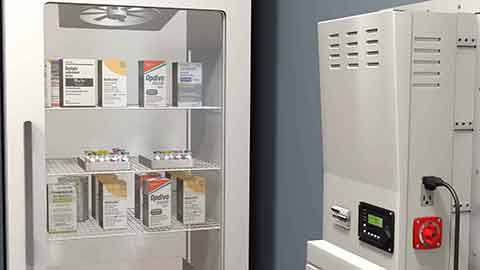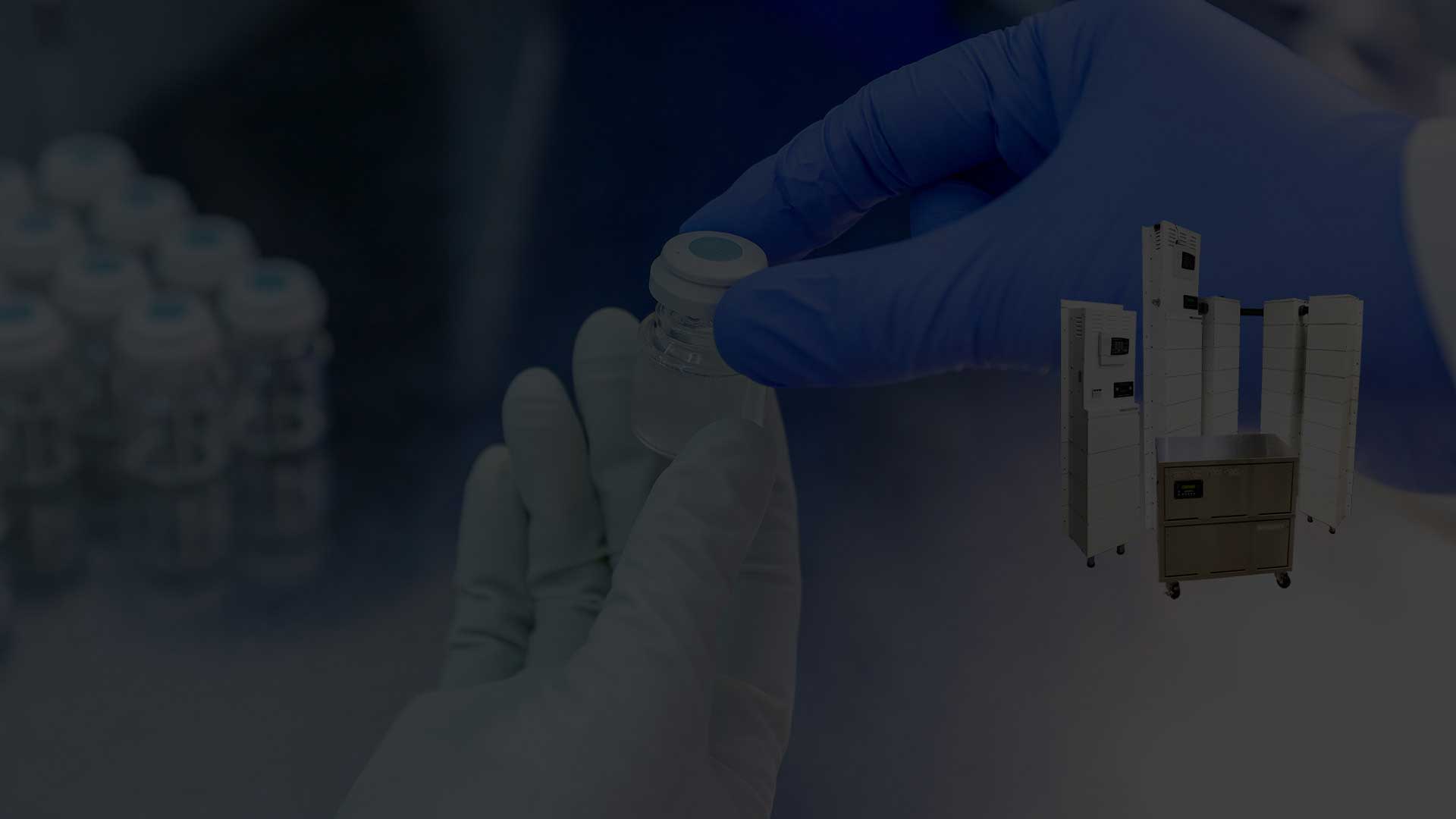How To Use Conditioned Water Bottles For Vaccine Transport
Hospitals and health care facilities often need to transport vaccines and medications for different reasons, such as responding to an emergency like a power outage or during normal business like a planned distribution.
The method of transportation depends on the reason for transportation. Thus, if a facility were transporting its medical supplies in response to an emergency, it would require, among other things, the use of conditioned water bottles.
What Is the Purpose Of Conditioned Water Bottles?
Together with the corrugated cardboard and insulating material, the condition water bottles act as temperature control devices. By keeping your refrigerated vaccines at the right temperature during transport, the cold chain can be maintained—keeping them from both freezing or spoilage.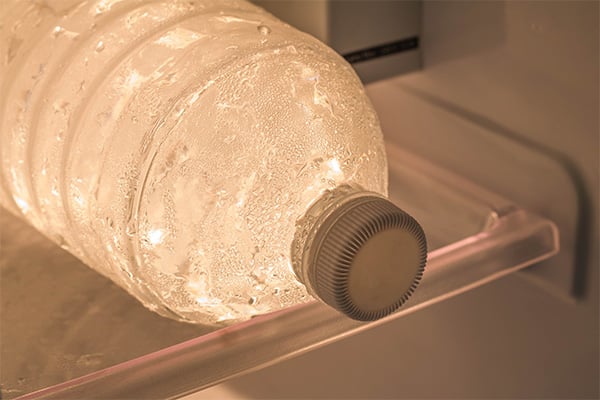
The US Centers for Disease Control and Prevention (CDC) recommends that you use conditioned cold water bottles to preserve refrigerated vaccines and medications and frozen water bottles for frozen vaccines. Room temperature water or warm water is not recommended as vaccines are likely to experience severe temperature excursions.
Why Do Healthcare Facilities Transport Vaccines?
As stated before, healthcare facilities transport vaccines for 2 main reasons:
- For planned distribution to off-site locations, such as medical outreaches, off-site clinics, or relocating stock.
- In response to emergency medical situations, such as an extended power outage or equipment breakdown
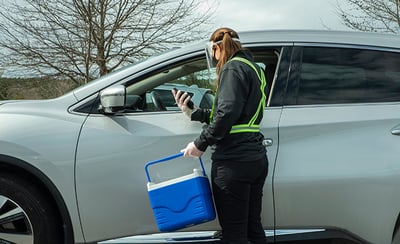
In both scenarios, the preferred transportation method is storing the vaccines in a portable freezer or refrigerator. Understandably, however, this transportation method is not usually available.
Thus, other methods to solve this “transportation problem” come into play.
For emergency transport, you can use either qualified containers and pack-outs, a professional transportation service (though you will have to consider the cost of transportation) or the conditioned water bottle method.
For planned transport, you can only use the qualified containers and pack-outs method. Using the conditioned water bottle method is inadvisable, as the CDC recommends it only for emergency transport.
How To Use The Conditioned Water Bottle Method To Store Vaccines
As this article focuses on the conditioned water bottle method, we won’t go into detail about the other ways until the end. Though, You will need the following supplies for the conditioned water bottle method:
- Hard-sided coolers or Styrofoam vaccine shipping containers. Note the following about your choice of shipping containers:
- Your coolers should be large enough to contain the amount of vaccine you want to transport.
- You can use original shipping boxes from the vaccine manufacturers if you still have them.
- Do not use soft-sided collapsible coolers.
2. Conditioned frozen water bottles. Note the following about the bottles:
- Use 16.9oz bottles for medium or large coolers and 8oz bottles for small coolers.
- Make sure you have enough bottles for two layers inside the cooler.
- Do not reuse coolant packs from the original vaccine shipping container. They increase the risk of freezing vaccines, and that may disrupt the vaccine's efficiency.
3. Two pieces of corrugated cardboard cut to fit the cooler’s interior dimensions.
- You will need them between a layer of insulating or cushioning material and conditioned water bottles.
4. Insulating or cushioning material, such as bubble wrap, packing foam, or Styrofoam.
- You will need two layers - one above and one below, and each layer must be at least one inch thick. Ensure it covers the cardboard completely.
Note: Packing peanuts or other loose materials will not work because they might shift during transport.
5. Temperature monitoring device
- You will need a continuous temperature-monitoring device to take temp readings while the vaccines are in transit. The CDC recommends a Digital Data Logger with a buffered probe.
Note: You can pre-chill a buffered probe for at least five hours in the refrigerator or use the one you currently have in your refrigerator (provided there are no vaccines left in it, or there’s an extra for the remaining vaccines).
How To Condition Water Bottles
Conditioned water bottles come from pre-frozen water bottles. You must have had the bottles already frozen in your freezer, where they can also help regulate the temperature in the freezer.
When you want to use the water bottles for vaccine transport, condition them by putting them in a sink filled with several inches of cool or lukewarm water. Keep the bottles in the water until you see a layer of water forming near the surface of the bottle.
Pro Tip:
When you rotate the bottle in your hand, you have an adequately conditioned water bottle if the ice block inside it spins. The conditioning process typically takes less than five minutes. If, after five minutes, the ice still sticks, put it back in the water for another minute.
How to Packing Your Vaccines For Transport During An Emergency
The following tips provide guidance for packing your vaccines for emergency transport.
Step 1 - line the bottom of your cooler with a layer of conditioned water bottles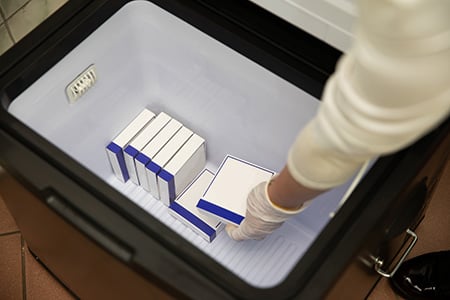
Step 2 - place one sheet of corrugated cardboard over the layer of conditioned water bottles. Ensure the cardboard covers the bottle completely.
Step 3 - place a layer of insulating or cushioning material over the cardboard. Remember that it must be at least one inch thick and cover the cardboard completely.
Step 4 - stack the boxes of vaccines and diluents on top of the insulating or cushioning material.
Step 5 - when the cooler is half-full, place DDL buffered probe in the center of the vaccines. However, be careful to keep the DDL display outside the cooler until you finish loading.
Step 6 - add the remaining vaccines and diluents to the cooler, covering the DDL probe.
Step 7 - place the second layer of insulating or cushioning material over the vaccines.
Step 8 - place the second corrugated cardboard piece over the insulating material.
Step 9 - place the remaining conditioned water bottles over the cardboard.
Step 10 - close the lid and attach the DDL display to the top of the lid.
How to Avoid Vaccine Transportation and Still Maintain Proper Vaccine Temperature
For end users of pharmaceuticals, the most likely scenario for them to experience a temperature excursion is because they’ve left the door open to a medical refrigerator/medical freezer or it has stopped running.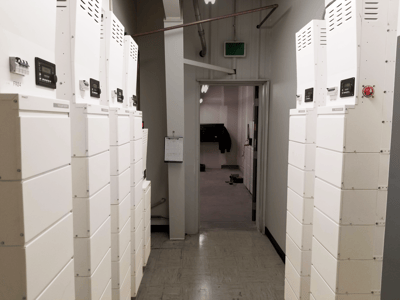
While door alarms and buffered temperature probes are fairly easy to source tools, a reliable and powerful backup power system for refrigerators can be harder to find.
Luckily, battery backup systems offer instant and automatic power for medical appliances as soon as the power goes out. As a result, no staff needs to be on-site to keep track of or start the generator and vaccines will continue to remain safe—with no extra work required.
Additionally, their vertical, cabinet-like design and leak-proof batteries mean they can be installed in even the tightest spaces and oriented in anyway to make them fit. Plus, if your medication or vaccine room is truly tight on space, a hardwired backup power unit can instantly supply remote power to your appliance—directly via the outlet its already plugged into.
Regardless of what kind of system is the best fit, they ensure that your entire stock of vaccines are protected from a sudden loss of power (and the resulting temperature excursions) by guaranteeing a seamless transition from utility power to backup power.
Even better, is that battery generators can be outfitted with as much power as you want. So, systems can be designed with enough power to protect a facility’s inventory:
- Overnight
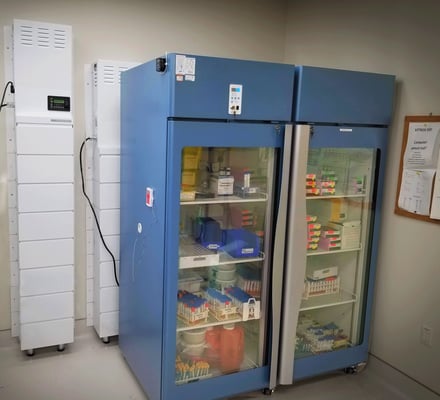
- All day
- Over a weekend
- Or even for a whole week.
So, to protect your facility from tens of thousands of dollars in lost vaccine stock, speak to a Medi-Products battery backup expert.
They’ll help design you a system that both meets your power needs and will fit inside your facility—for a much lower cost than what your vaccines are worth. So a backup power system pays for itself the first time your power goes out.
Designing a custom system is as easy as taking a picture of your appliance’s nameplate, and a photo of the room where it’s in.
Then, you just email both photos to our Product experts, and we’ll provide you with multiple options for backup power protection.
For more information contact: 1.800.7653237
